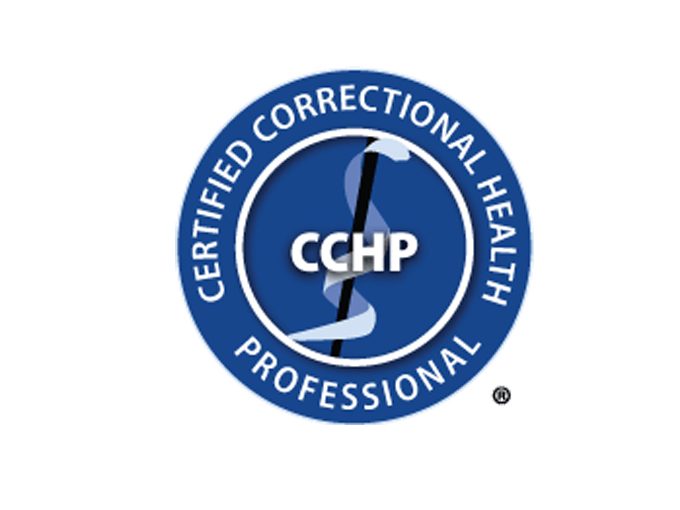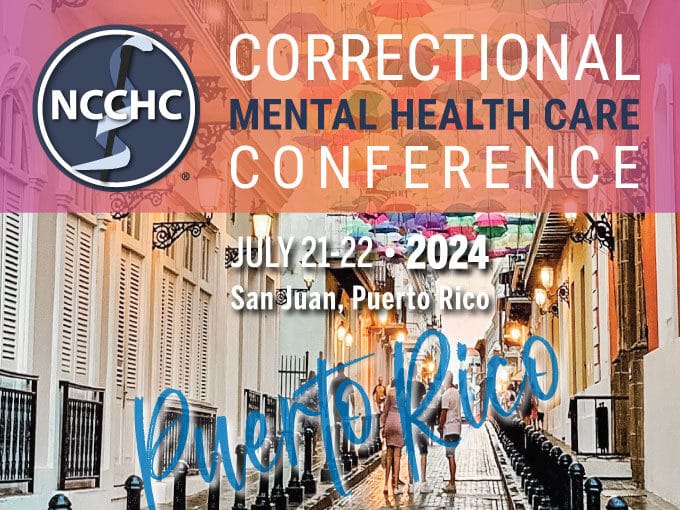
Standards Q&A: 75% Custody Health Training Requirement
Does the 75% requirement refer to all custody staff or only those working during
Home The Importance of Custody-Health Care Collaboration, Part 2
 Dec 14, 2021
Dec 14, 2021While knowledgeable leadership is critical to ensuring that a correctional system runs effectively, no group is more important to the day-to-day success of an organization than the line-level employees who make things happen: the custody staff who supervise the individuals incarcerated in the facility, and the health care staff who ensure that those individuals receive appropriate care.
Those two professional groups are uniquely situated to observe behavior, evaluate changes over time, and ensure chronic, urgent, and emergent issues are handled appropriately. They help make sure that a safe and secure environment is maintained while effective medical, dental, and mental health services are provided. When they work well together, they make each other’s jobs easier and everyone safer.
Inside the Head of a Health Professional
These two groups, however, may sometimes feel like they are operating at cross purposes. After all, the primary mission of custody staff is to maintain order and secure the environment. The primary mission of health care staff is to identify, assess, and treat individuals’ health needs. The two groups look at the world through different, though complementary and equally important, lenses.
Faced with their own stressors, it can be easy for custody to forget the tough position health care is in. Providing medical, mental health, and dental care in a correctional environment presents many unique challenges. It takes an especially motivated and dedicated professional to seek employment and work effectively in correctional health.
Within incarcerated populations, acute and chronic health issues far exceed those found in the outside community. Recruiting high-quality health care professionals can be a challenge due to stereotypes associated with corrections; staff shortages are common. The strictly structured routines and strong personalities often found in corrections can be quite foreign to those new to the environment, creating additional challenges.
But it is important to understand, respect, and appreciate the value health care professionals bring to a correctional environment, in addition to mitigating health issues. When incarcerated people receive appropriate care and attention, they are less likely to file grievances or engage in disruptive behavior, making the job of a custody professional safer and easier.
Communication between custody and health care is critical to providing quality care. The more open dialogue there is, the fewer adverse events will occur. Health care staff can act as a force multiplier, addressing inmate concerns before they turn into disruptive behavior. This team-centered perspective makes the environment safer for everyone working within the facility, as well as for the incarcerated.
It Goes Both Ways
Most custody personnel understand that the input of health care staff is valuable and helpful to them; health care personnel can be confident that their perspectives will be heard and respected.
But health care staff members also need to remain open to information provided by their custody counterparts, who can be a valuable source of intel. Since they are constantly with the incarcerated, they might know relevant information about an individual. They may witness threatening behavior or recognize a threatening demeanor that calls for heightened security.
It is critical that health care and mental health staff work with custody to gain perspective on at-risk individuals. While clinical autonomy is required per NCCHC standards, behavioral information from custody can be very important in making health care decisions, providing effective care, and staying safe.
Tips for Leadership
I strongly encourage each leader reading this article, from any discipline, to take a critical look at yourself and the overall operation of your organization. If you are making your area “look good” instead of critically analyzing your operation and how it impacts the big picture, you are not as effective as you could be.
Avoid a “siloed” leadership style. Without open and receptive relationships among leaders, the operation will not be as successful.
Model the behavior and communication style you want your people to emulate. When cross-disciplinary leaders are engaged with each other on a regular basis, staff understands that communication is accepted and expected.
Provide substantial cross-training for custody personnel. While custody staff is primarily trained to focus on safety and security, some health care-related training is essential. Since jails and prisons are now the largest mental health facilities in the country, training should include recognizing mental health issues as well. Crisis Intervention Training is also becoming important. As discussed in NCCHC Standard C-04 Health Training for Correctional Officers, “Because correctional personnel are often the first to respond to problems, they must be aware of the potential for emergencies that may arise, know the proper response to life-threatening situations and understand their part in the early detection of illness and injury.”
Adhere to NCCHC standards. Include reference to standards compliance into policies and procedures and make clear that they pertain to health care and custody alike.
Engage custody staff in all disaster, emergency, and man-down drills.
Include custody representation in regular weekly meetings to make sure aspects of incident review and operations are not missed.
Involve everyone in the CQI process. Accurate and timely statistics are critical to identifying areas that need to be addressed. Failures should be openly discussed among custody and health care leadership, with strategies and tactics identified to address the problem and improve operations.
In the event of an in-custody death or significant event, conduct a critical review and openly communicate about ways to prevent future incidents of a similar nature. The sooner leaders work together to identify gaps and fill them, the better operations will be.
Become certified as a CCHP. There is no better way to become fluent in the NCCHC standards than studying for the exam to become a Certified Correctional Health Professional. Not only can certification improve operations, it also is an effective way to hold people accountable to the standards.
Provide CCHP training and/or pay for health care and custody staff to take the exam.
Working collaboratively creates opportunities to go from good to great. When there is a team atmosphere among custody and health care at all levels of the organization, everyone wins. Adverse events are more regularly prevented and mitigated; leadership teams are more effective; staff is safer and more productive; and patients receive the best, most appropriate care.
Relevant NCCHC Standards
Standard A-03 Medical Autonomy: Health care decisions are made by qualified health care professionals for clinical purposes.
Standard C-04 Health Training for Correctional Officers: Correctional Officers are trained to recognize the need to refer an inmate to a qualified health care professional.
Fred W. Meyer, MA, CJM, CCHP, is deputy chief of the Las Vegas Metropolitan Police Department. He oversees the largest jail system in the State of Nevada, with over 56,000 bookings a year, and provides leadership to 1,300 commissioned and civilian employees.
Read Part 1 for a health care professional’s take on this subject.


